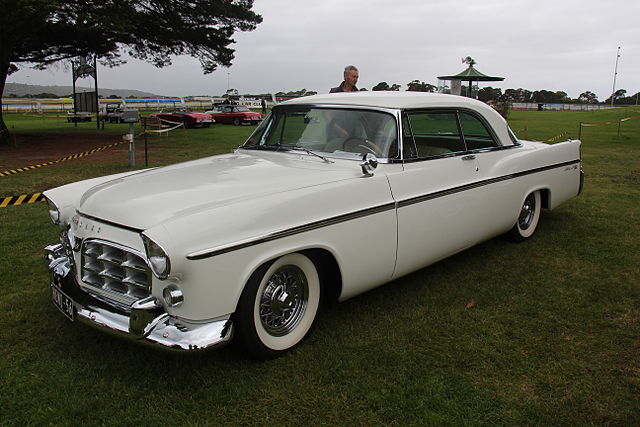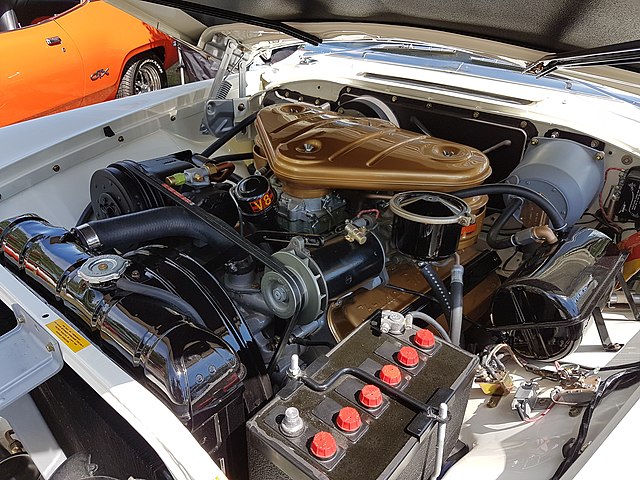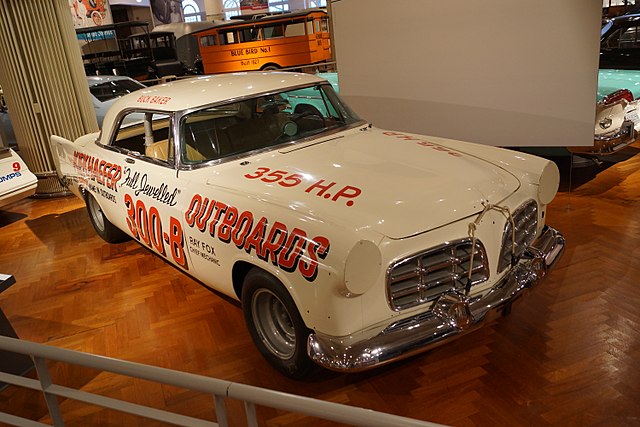
The Chrysler 300 First Generation, produced during 1955 and 1956, marked the advent of a new era in the American automobile industry. This car not only introduced high performance to the luxury segment but also became a symbol of post-war American prosperity and innovation. In this article, we delve into the distinct aspects of the Chrysler 300, covering its inception, design, performance, cultural impact, and legacy.
Origins and Development

The Chrysler 300 was introduced in 1955 as a high-performance luxury car, designed to compete in the emerging market of powerful yet stylish vehicles. Named after its horsepower rating, the Chrysler 300 was one of the first production cars in the U.S. to offer such a high power output, a testament to Chrysler’s engineering ambitions at the time.
The idea behind the Chrysler 300 originated from the desire to blend the comfort of luxury sedans with the performance typically reserved for sports cars. It was conceived by Chrysler’s engineering team led by Virgil Exner, who was also responsible for the company’s “Forward Look” design strategy. The team aimed to create a car that was both a powerful performer and a head-turner on the road.
The initial response to the Chrysler 300 was overwhelmingly positive, with the automobile industry praising its innovative approach. The car’s introduction was timely, tapping into the consumer’s growing interest in high-performance vehicles, and it quickly set a standard for the segment.
Design and Styling

The Chrysler 300’s design was a significant part of its appeal. Its exterior featured sleek, clean lines that conveyed a sense of speed and sophistication. The car’s front grille, large and imposing, was flanked by twin headlights, a design that became iconic in Chrysler vehicles of that era.
Inside, the Chrysler 300 boasted a luxurious interior that included high-quality materials and advanced features for its time. The dashboard was designed with the driver in mind, featuring easy-to-read gauges and an intuitive layout. This focus on the driver’s experience was a departure from the norm for luxury cars of the period, which often prioritized passenger comfort over driver engagement.
The color and trim options available for the Chrysler 300 were both luxurious and varied, offering buyers the ability to customize their vehicles to suit personal tastes while maintaining a high standard of elegance and comfort.
Performance and Engineering

At the heart of the Chrysler 300 was its 331 cubic inch (5.4-liter) Hemi V8 engine, which produced 300 horsepower. This engine utilized advanced technology such as hemispherical combustion chambers and high-performance dual-quad carburetors, which were revolutionary at the time and provided exceptional power and efficiency.
The Chrysler 300 was not just about straight-line speed; it also featured handling characteristics that were uncommon in large sedans of that era. The suspension was specially tuned to offer a balance between comfort and responsive handling, making it capable of performance driving without sacrificing ride quality.
The car’s performance credentials were further underscored by its success in motorsports, particularly in NASCAR, where it dominated the competition. This success on the racetrack helped cement the Chrysler 300’s reputation as a powerful and reliable performance car.
Cultural Impact

The Chrysler 300 quickly became a symbol of American luxury and performance, reflecting the nation’s post-war optimism and industrial prowess. It appealed to a market segment that desired a blend of comfort, style, and sheer power, which was somewhat of a novelty at the time.
Celebrities and affluent buyers were drawn to the Chrysler 300 for its distinctive look and impressive specifications. Owning a Chrysler 300 became a status symbol, indicative of both wealth and a discerning taste in cars.
The vehicle’s influence extended beyond the automotive industry, appearing in numerous films and advertisements of the era, further embedding it in American popular culture. It represented a combination of American ingenuity and luxury, becoming an icon of 1950s automotive design.
Legacy and Influence
The Chrysler 300 set the stage for a series of “letter series” models that continued to emphasize high performance combined with luxury. Each subsequent model, from the 300B to the final 300L, offered innovations and improvements, but it was the first generation that made the most significant impact, setting the tone for what was to come.
Today, the Chrysler 300 First Generation is highly sought after by collectors and enthusiasts, revered not only for its historical significance but also for its aesthetic and mechanical innovations. It remains a celebrated example of American automotive excellence.
The Chrysler 300’s legacy is evident in the continued production of the modern Chrysler 300 series, which, despite many changes over the decades, still holds true to the original’s ethos of powerful performance in a luxurious package. The first generation Chrysler 300 thus remains a pivotal chapter in the story of American automotive history, symbolizing a time when cars were as much about statement as they were about transportation.
